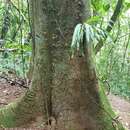en
names in breadcrumbs


Brosimum is a genus of plants in the family Moraceae, native to tropical regions of the Americas.
The breadnut (B. alicastrum) was used by the Maya civilization for its edible nut. The dense vividly colored scarlet wood of B. paraense is used for decorative woodworking.[2] B. guianense, or snakewood, has a mottled snake-skin pattern, and is among the densest woods, with a very high stiffness; it was the wood of choice for making of bows for musical instruments of the violin family until the late 18th century, when it was replaced by the more easily worked brazilwood (Paubrasilia echinata). Plants of this genus are otherwise used for timber, building materials, and in a cultural context.
Brosimum is a genus of plants in the family Moraceae, native to tropical regions of the Americas.
The breadnut (B. alicastrum) was used by the Maya civilization for its edible nut. The dense vividly colored scarlet wood of B. paraense is used for decorative woodworking. B. guianense, or snakewood, has a mottled snake-skin pattern, and is among the densest woods, with a very high stiffness; it was the wood of choice for making of bows for musical instruments of the violin family until the late 18th century, when it was replaced by the more easily worked brazilwood (Paubrasilia echinata). Plants of this genus are otherwise used for timber, building materials, and in a cultural context.